Search Results for Tag: Arctic
Migratory Bird Day: Remember the Arctic!
This weekend, bird and nature-lovers around the world will be marking “World Migratory Bird Day“. This is a relatively new annual event in the global calendar of “special days”. It has only been celebrated since 2006. You may well be sceptical about the value of yet another day of “xyz”, quite simply because of the sheer number of them. This one was the brainchild of, amongst others, Bert Lenten, who is currently deputy-head of CMS, the Convention on Migratory Species. I have interviewed him on bird-related issues a few times in recent years. CMS, which is part of UNEP, has its headquarters here in Bonn, close to my Deutsche Welle office. The CMS agreement is also known as the Bonn Convention.
When I talked to Bert this week, he told me the idea of having a World Migratory Bird Day came up when bird flu first hit Europe in 2005. There was such a lot of panic and so many negative reactions to migratory birds, wrongly suspected of being a main cause of the outbreak, that Bert and some colleagues had the idea of reminding people once a year that birds are actually something positive.
Migratory birds, from large albatrosses, storks or geese to smaller terns, swallows or tiny sanderlings cover huge distances between their winter quarters and their breeding grounds every year. The Arctic is home to thousands of them every summer, when they fly up to breed. The Arctic tern is actually thought to hold the record for long-distance migration, flying between the Antarctic and the Arctic. I remember being attacked several times on Svalbard in spring when I advertently got too close to some of their nesting sites. No harm done, I hasten to add. I enjoyed watching their antics.
Now, with climate change affecting the Arctic much more drastically than the rest of the world, birds are finding conditions very different from they used to be. Ferdinand Spina is head of Science at Italy’s National Institute for Wildlife Protection and Research ISPRA, in Bologna, Italy. He is also in charge of the Italian bird ringing centre, and currently also Chair of the Scientific Council of CMS. I talked to him last week and he stressed that climate change is becoming one of the greatest threats to migratory birds. The Arctic is one of the most obvious illustrations.
“Birds are a very important component of wildlife in the Arctic. There are different species breeding in the Arctic. The Arctic is subject to huge risks due to global warming. It is crucially important that we conserve such a unique ecosystem in the world. Birds have adapted to living in the Arctic over millions of years of evolution, and it’s a unique physiological and feeding adaptation. And it is our duty to conserve the Arctic as one of the few if not the only ecosystems which is still relatively intact in the world. This is a major duty we have from all possible perspectives, including an ethical and moral duty, ” he says.
I couldn’t agree more, Fernando. We talked about the seasonal mismatch, when birds arrive too early or too late to find the insects they expect to encounter and need to feed their young. When I visited Zackenberg station in eastern Greenland in 2009, Lars Holst Hansen, the deputy station leader, told me the long-tailed skuas were not breeding because they rely on lemmings as prey. The lemmings were scarce because of changes in the snow cover.
Lars Holst Hansen is back in Zackenberg right now. He also takes some great wildlife photos, so I am happy to recommend a look at his site.
Jeroen Reneerkens is another regular visitor to Zackenberg, as he tracks the migration of Sanderlings between Africa and Greenland. A great project and an informative website!
Morten Rasch from the Arctic Environment Dept of Aarhus University in Denmark is the coordinator of one of the most ambitious ecological monitoring programmes in the Arctic. The Greenland Environment Monitoring Programme includes 2 stations, Zackenberg, which is in the High Arctic region and Nuuk, Greenland’s capital, in the “Lower” Arctic. Hansen and other members of Rasch’s teams monitor 3,500 different parameters in a cross-disciplinary project, combining biology, geology, glaciology, all aspects of research into the fragile eco-systems of the Arctic. At that time, he told me during an interview, ten years of monitoring had already come up with worrying results:
“We have experienced that temperature is increasing, we have experienced an increasing amount of extreme flooding events in the river, we have experienced that phenology of different species at the start-up of their growing season or the appearance of different insects for instance now comes at least 14 days earlier than when we started. And for some species, even one month earlier. And that’s a lot. You have to realise the entire growing season in these areas is only 3 months. When we start up at Zackenberg in late May, or the beginning of June, the ecosystem is completely covered in snow and more or less frozen, and when we leave, in normal years – or BEFORE climate change took over – then we left around 1st September and the ecosystem actually started to freeze up. So the entire biological ecosystem only has 3 months to reproduce and so on. And in relation to that, a movement in the start of the system between 14 days and one month – that’s a lot.”
I can’t write about birds and climate change in the Arctic without mentioning George Divoky, an ornithologist whose bird-monitoring has actually turned into climate-change monitoring on Cooper Island, off the coast of Barrow, Alaska. George looks after a colony of Black Guillemots and spends his summer on the island. In recent years, he has taken to putting up bear-proof nest boxes for the birds, because polar bears increasingly come to visit, as the melting of the sea ice has reduced their hunting options. He has also observed the presence of new types of birds which die not previously come this far north. His website is well worth following.
So, friends of the Arctic. Spare a thought for our feathered friends this weekend. They pollinate plants, control pests and insect populations – and give us that happy feeling of springtime we are enjoying in Bonn this weekend. I am reminded of a young “climate ambassador” in Alaska, flabbergasted to see that the glaciers we had come to observe were no longer visible from the Visitors’ Centre built for that purpose just a few years before. “Everything’s connected”, was his simple statement. Presumably that is why he has spent so much time developing low-carbon solutions for companies around the globe.
Arctic melt worries UN and White House
The UN weather agency WMO (World Meteorological Organisation) has confirmed that the Arctic’s sea ice melted at a record pace in 2012, the ninth-hottest year on record. With just 3.4 million square kilometres (1.32 million square miles) during the August to September melting season, the sea ice cover was a full 18 percent less than the previous low set in 2007. The WMO’s Secretary-General Michel Jarraud said this was a “disturbing sign of climate change”, and pointed to the link between climate change and extreme weather events.
Meanwhile, a special briefing was called at the White House to discuss the possibility of the Arctic becoming ice free in the summer within just TWO years. Nafeed Ahmed, director of the “Institute for Policy Research & Development” headlines his post for the “Guardian“: “White House warned on imminent Arctic ice death spiral”. He describes the meeting, including NASA’s acting chief scientist Gale Allen, the director of the Department of Homeland Security and the Pentagon as “the latest indication that US officials are increasingly concerned about the international and domestic security implications of climate change”.
10 Arctic specialists were called in to advise the US government, including marine scientist Professor Carlos Duarte, currently director of the Oceans Institute at the University of Western Australia. I met and interviewed Prof. Duarte back in 2011 at the Arctic Frontiers conference, when he worked with the Spanish Council for Scientific Research. At that time, he was already calling for urgent action and warning of the danger of “climate tipping points”, including the melt of the Arctic sea ice. His conclusions are based on research which was presented in an article in Nature Climate Change last year.
The West Australian newspaper quotes Prof. Duarte as saying the “snowballing situation would prove as hard to slow down as a runaway train”. He told the paper the ice melt was accelerating faster than any of the models could predict, and the prospect of an Arctic Ocean free of ice had been brought forward to 2015, compared with a prediction in 2007 that at least a third of the normal sea ice extent would remain in summer in 2100. When I spoke to him in 2011, the US navy was already assuming a date of 2050 and Duarte said he expected it to be even earlier.
Professor Carlos Duarte on Arctic Tipping Points
Prof Duarte also warned of the increasing danger of melting methane. Let me quote a little from the interview:
DUARTE: “We know from the history of ice covering the planet along geological time scales that ice is strongly a non-linear element in the earth’s system. It’s one of the components that show very rapid, very abrupt changes and tipping points. So we expect that once the ice will be lost quickly from the Arctic and also from the shelves in Greenland, then other forces will be set in motion, and many forces will be set in motion by loss of ice. One of them is the release of methane hydrates from the shallow continental shelves, mostly around Siberia, and those are molecules of methane that are trapped into ice in the sediments of the continental shelves and in the permafrost on land. So if this ice melts, this methane can be released abruptly and suddenly. And deposits of methane trapped in the shallow sediments of the Arctic amount to about five times the greenhouse power that humans have set in motion through burning fossil fuels. So if this five times what we have released in 150 years is released within a few years, that would be detrimental to the climate system and it could lead to a very rapid warming, and could again set in motion other forces like increased freshwater discharge to the Arctic, which has already increased by 30 percent. And this involves a greater export of fresh water and buoyancy to the Atlantic, which may affect global circulation and global currents, and those in turn will affect regional climates also further south to the sub-Arctic region. Also, warmer temperatures are leading to dieback of the boreal forest and also the peat deposits in the boreal region are drying up to the extent that they can catch fire.”
(IRENE QUAILE: How close are we?)
DUARTE: “We very much know what the threshold and the tipping point for the release of methanes will be, because the methane is kept in the hydrates, deposits in the salty sediments by ice, frozen sediments, and we know the freezing point of salty sediments may be around minus 1 degree. So when the temperature of water in the summer goes well above freezing point, the hydrates will defrost and the methane will be released. So what we need to monitor is the temperature of the shallow waters in the Siberian shelf and other shallow waters in the Arctic, in the Canadian region as well, and see how close they’re getting to temperatures of 3 and 4 degrees, which will be those that will lead to melting of the hydrates.”
Scary? The interview, it seems, is as relevant as ever, the Professor’s warnings more urgent. I wonder what it feels like to be called in to the White House to brief the government of a country that is both a key player in the Arctic and a top emitter of the greenhouse gases that are causing the melt? On the one hand it must be satisfying for the scientists to know they are finally being heard. But there must also be some frustration about the extent of dangerous climate change that had to be set in motion first. Has the Arctic ice already reached a “tipping point”?
Let me close with another quote from that interview with Carlos Duarte:
DUARTE: “Unfortunately society is much more mobilised by opportunities than by risks. So the discourses and warnings of risks actually almost lead to inaction by society, whereas the sight of opportunities encourages society to set themselves in motion. So the opportunities for economic growth in the Arctic have dominated the discourse and the actions by society and policy makers. Those opportunities are new navigation routes across the Arctic, and the exploitation of oil, gas and fisheries, that were not accessible just a few years ago. The paradox in this is that the Arctic countries recognise that the forces that are improving access to these resources is actually climate change and that the reason for this climate change is the burning of fossil fuels by humans. Arctic nations themselves are responsible for 26% of the release of these greenhouse gases and are taking advantage of these opportunities, which will involve greater emissions of greenhouse gases. (…) I think there should be a balance between the economic growth these opportunities could bring about and the economic losses, they may bring about, which I don’t think have been quantified.”
10 years French-German Arctic Station
Congratulations to the team of the joint French-German Arctic research station in Ny Alesund, Svalbard. It is ten years since the German polar authority AWI (Alfred-Wegener Institute for Polar and Marine Research) and its French counterpart IPEV (Institut Polaire Paul Emile Victor) joined forces at the world’s northernmost research base.
The station was my first Arctic destination in 2007, so it has a special significance for me. During the IPY, I was involved in an international radio cooperation to report on polar science, which was how the Ice Blog was born.
Photo gallery from Ny Alesund, “From Pole to Pole”.
AWIPEV is the biggest of the research stations in Ny Alesund, and takes up to 150 scientists from France and Germany in the course of a year.
I visited again in 2010 with a team looking at ocean acidification. Their equipment was transported up by the Greenpeace ship Esperanza, a “first” in terms of cooperation between scientists funded by the EU’s EPOCA programme and the environment group. Greenpeace offered the ship to help out when none of the scientific research vessels was available for the project.
The station has also just been the first to be officially approved by the climate data network GRUAN. Not a terribly attractive acronym, but definitely easier to say/write than the whole title: Global Climate Observing System Reference Upper Air Network. Basically, the idea is to standardize and the measurement of climate parameters around the world so that the figures are really comparable. It was initiated by the World Meteorological Organization, the Intergovernmental Oceanographic Commission, UNESCO, UNEP and the International Council for Science.
Keep up the good work everyone up there at AWIPEV.
Why a new “Arctic Circle” Forum?
While working on a story about the Arctic Council in the run-up to its next meeting in May, I was greatly interested by the announcement that there is to be a new global forum called the Arctic Circle. Iceland’s President Ólafur Ragnar Grímsson, made the announcement this week at an event held by the National Press Club in Washington. On the Arctic Circle website, the new organization is described as “nonprofit and nonpartisan”. The mission is “to facilitate dialogue and build relationships to confront the Arctic’s greatest challenges. We aim to strengthen the decision-making process by bringing together as many Arctic and international partners as possible under one large ‘open tent’. By facilitating circumpolar meetings of leaders across disciplines, we will identify truly sustainable development practices for the Arctic, the world’s last pristine environment”.
The background, of course, is the opening of the Arctic to shipping and commercial exploitation because of climate change. The organisers say the new open forum will help raise the profile of Arctic issues worldwide and discuss solutions “in a frank and collaborative manner”.
I met President Grimsson in January in what at first sight might appear an unusual location – the Gulf emirate of Abu Dhabi.
We live in an ice-dependent world, says Iceland’s President
He actually has close ties to the emirate, and was there for “sustainability week” and the World Future Energies Forum. He explained to me then his interest in making it clear that the Arctic is not just of significance to the High North region and the countries around it, but the planet as a whole. So I am not surprised that he is spearheading an attempt to open the region to the influence of other countries. Iceland has also been conducting a lot of negotiations with China, including a new free trade agreement announced by the President this week. As reported on the Ice Blog and DW before, China is increasingly interested in getting a foothold in the Arctic.
See China’s Arctic ambitions spark concern
Grimsson told Thomson Reuters the new forum was needed because “while most countries have a stake in the melting of Arctic ice, only eight – Canada, Denmark, Finland, Iceland, Norway, Russia, Sweden and the United States – are members of the Arctic Council”. The intergovernmental group was established in 1996.
China, India and Singapore are amongst the non-Arctic states seeking observer status on the Arctic Council at a meeting to be held in Sweden next month. The new “Arctic Circle”, on the other hand, would be open to anybody: “concerned citizens, representatives of ngos, scientists, researchers alongside governments and corporations.”
The first meeting of the new forum will be held in Iceland in October. It remains to be seen who will sign up and how influential it will turn out to be. The formation of the group shows the Arctic’s rising significance on the international agenda. The question is which forum will turn out be the best placed to effectively protect the sensitive ecosystems and traditional lifestyles of indigenous groups in the Arctic at the time when international commercial interest is growing steadily. And with the burning of fossil fuels continuing to exacerbate climate change and no progress being made towards reducing emissions – who is to mediate in the conflict between those who want to profit from exploiting oil and gas resources in The Arctic and those who want to stop using it and shift to climate-friendly renewables? There are those who would like to do both. But as the saying goes, “you can’t have your cake and eat it” – or maybe you can’t have your ice and melt it?
No Arctic Council meeting for Greenpeace North Pole trekkers
A group of young campaigners have been trekking to the North Pole this week, as part of the Greenpeace campaign to “Save the Arctic“. There are 16 people in the group, including four international youth ambassadors : Hollywood actor Ezra Miller, two Arctic Indigenous representatives and a young man from the Seychelles . I was hoping to be able to report here on the Ice Blog that they had met with members of the Arctic Council who were also to visit the North Pole this week. But for reasons yet to become clear, the meeting didn’t happen.
One of the explorers, Josefina Skerk, a 26-year-old member of the Sami Parliament in Sweden, had sent a letter to Gustaf Lind, Swedish chair of the Arctic Council’s Senior Arctic Officials, requesting a meeting with the Arctic officials, when they heard they would be at the North Pole at the same time. Mr. Lind apparently accepted the invitation, but the meeting did not take place. There is an amazing multimedia website for the project, where you can follow the expedition and find out about the trekkers and their motives: Into the Arctic. One of the girls says her hands are freezing but her blood is boiling because the meeting didn ‘t work out. But you can see and hear all that for yourselves on the site.
The activists say “no one nation should own the Arctic or be allowed to exploit the melting Arctic sea ice, a crisis created by climate change, for more of the fuels that caused the melt in the first place”. The trekkers are carrying with them a time capsule that contains a declaration with 2.7 million signatures calling for the Arctic to be made a global sanctuary. Greenpeace says they plan to lower the capsule and a ‘Flag for the Future’ through 4.3 km of freezing water to the seabed beneath the North Pole.
Some of those signatures were collected here in Bonn, as reported on the ice blog and DW radio and online pages at the time:




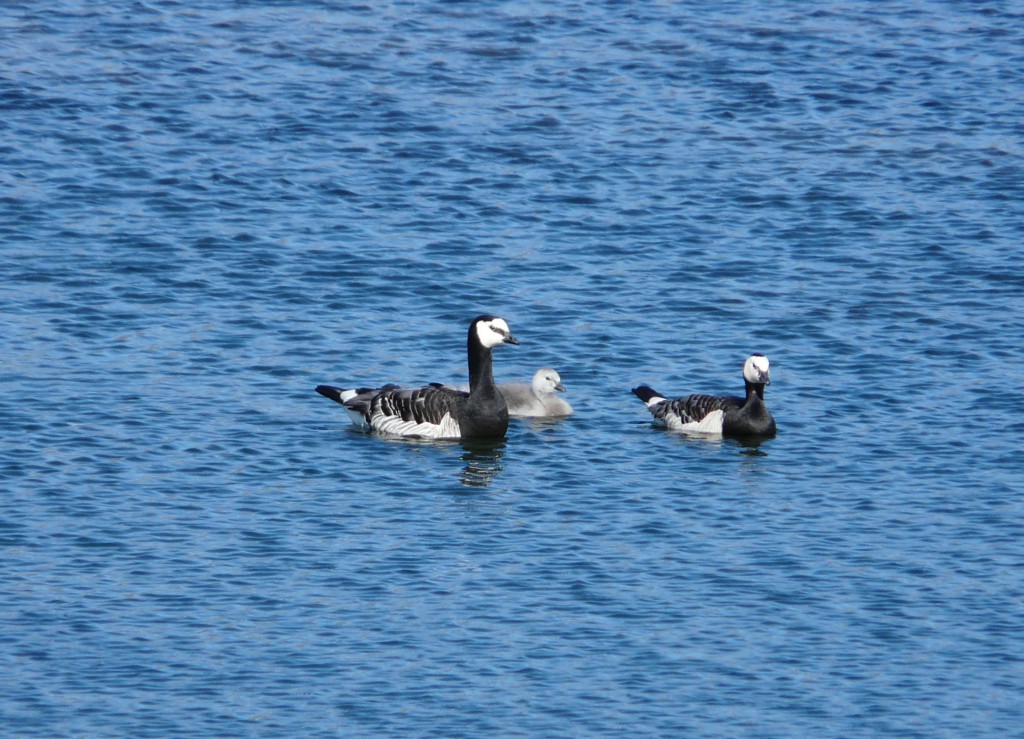



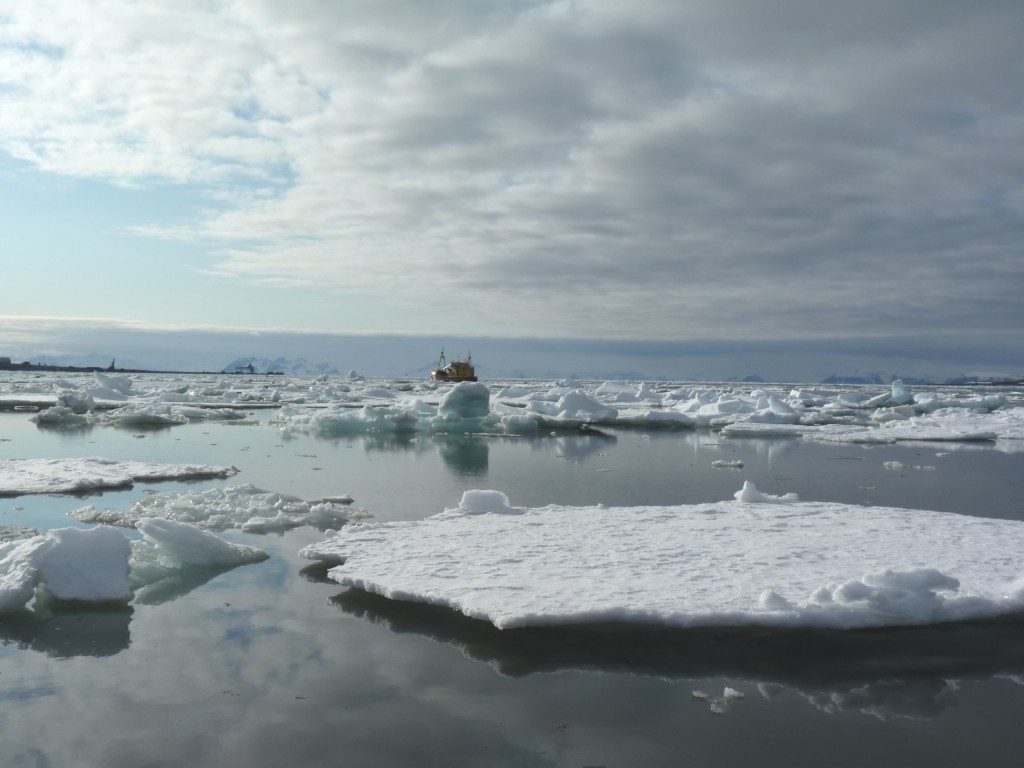

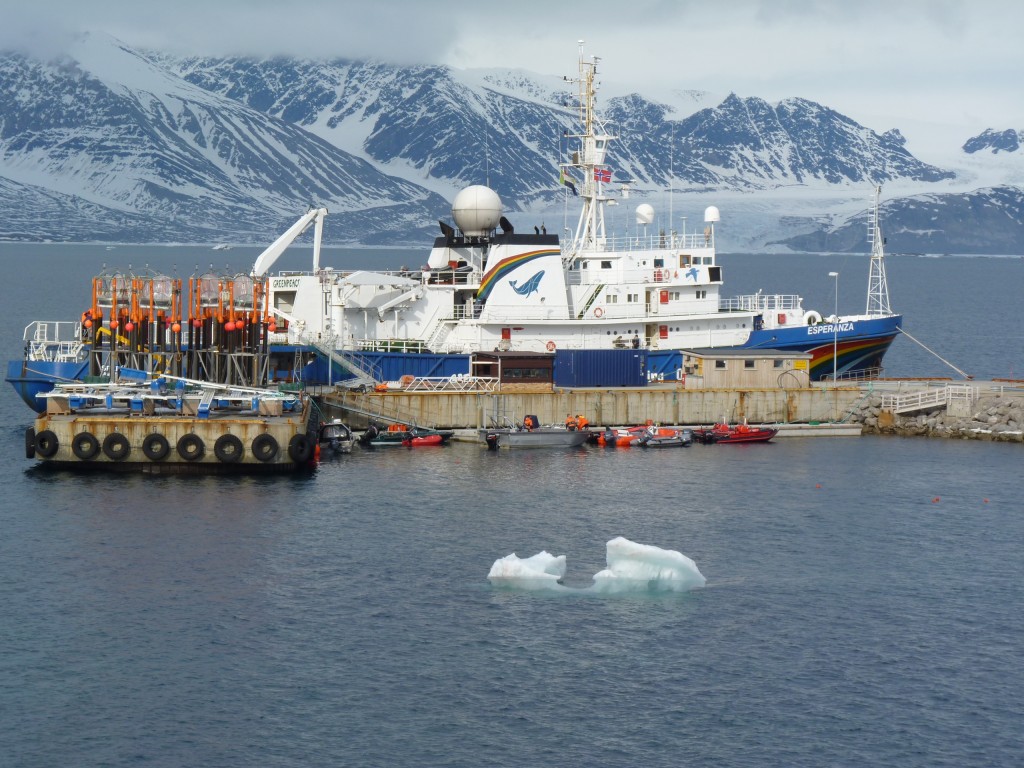
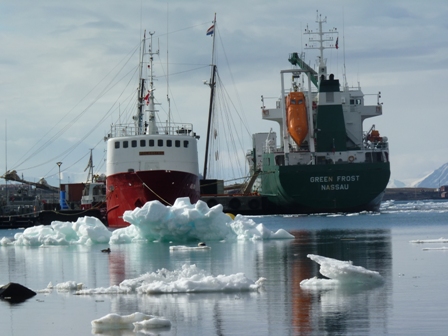
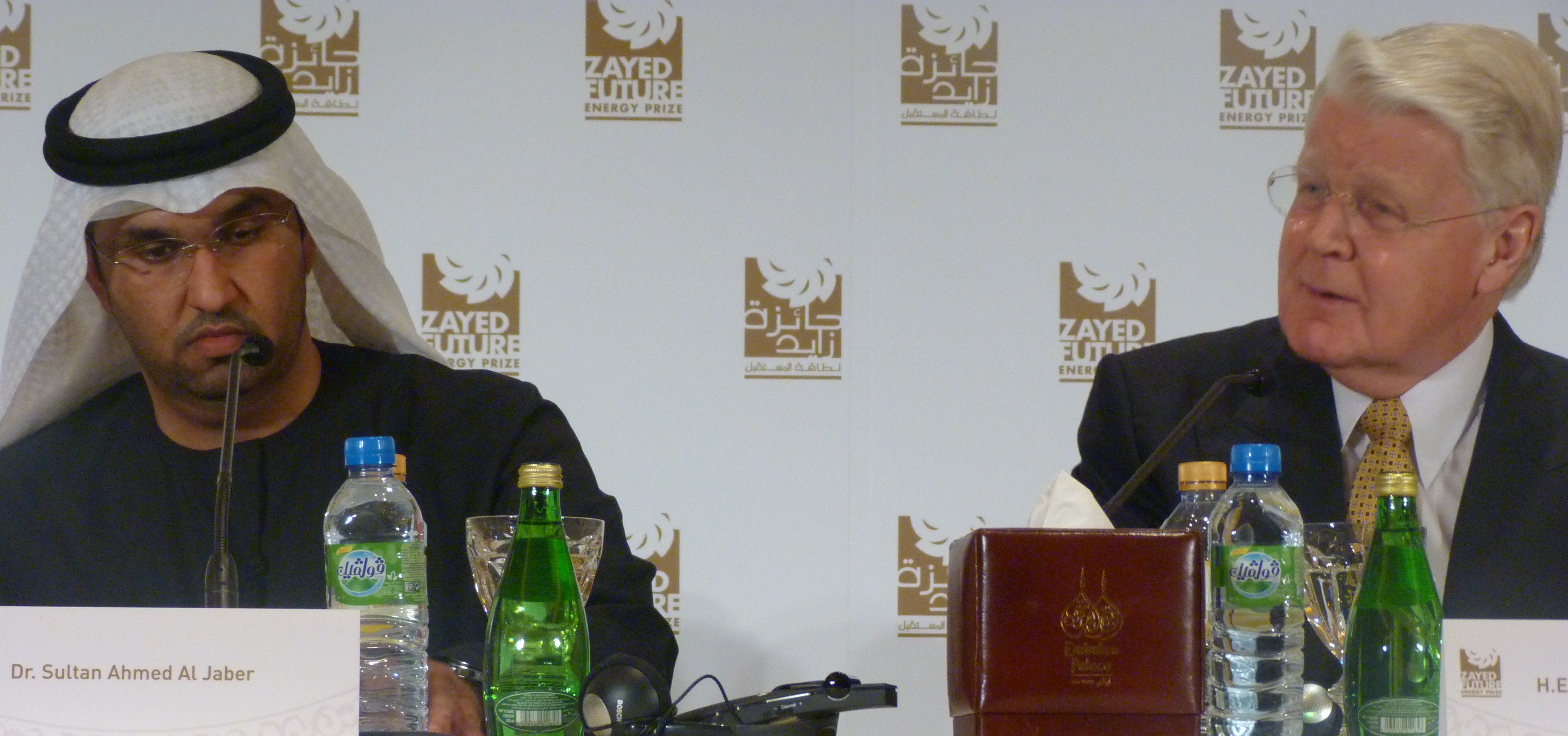


















Feedback